

- This event has passed.
Strongly Correlated Quantum Materials and High-Temperature Superconductors Series
September 2, 2020 @ 10:30 am - February 2, 2022 @ 12:00 pm
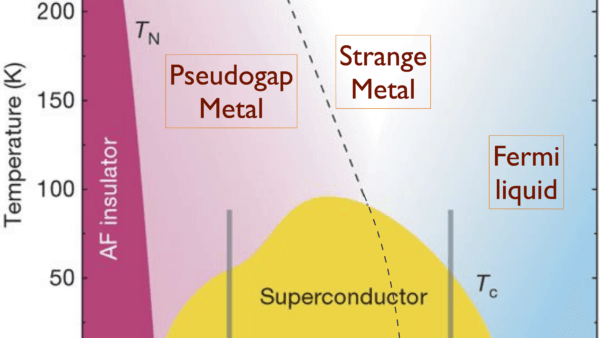
In the 2020-2021 academic year, the CMSA will be hosting a lecture series on Strongly Correlated Materials and High Tc Superconductor. All talks will take place from 10:30-12:00pm ET virtually on Zoom.
Cuprate high-temperature superconductors are a classic quantum material system to demonstrate the beauty of “Emergence and Entanglement” in the quantum phases of matter. Merely by adding more holes into an antiferromagnetic insulator, several fascinating phases emerge, including a d-wave superconductor, a pseudo-gap metal, and strange metal. After intensive studies from experimental, theoretical, and numerical communities for more than three decades, remarkable progress has been made, but basic questions remain:
- What is the origin of the superconductivity? What are the relative contributions of electron-phonon coupling, spin fluctuations, or resonating-valence-bonds?
- How do we explain the pseudo-gap and the Fermi arc in the underdoped region above the critical temperature? Are they from some symmetry breaking order parameters, or do we need an unconventional picture involving fractionalization?
- Is the strange metal at optimal doping associated with a quantum critical point? And if so, what is the driving force of this phase transition?
The cuprate quantum materials have been a major source for many new concepts in modern condensed matter physics, such as quantum spin liquids, topological order, and non-Fermi liquids. In the coming years, it is clear that the study of the cuprates will continually motivate new concepts and development of new techniques. In this seminar series, we hope to accelerate this process by bringing together deeper conversations between experimental, theoretical, and numerical experts with different backgrounds and perspectives.
The Strongly Correlated Quantum Materials and High-Temperature Superconductors series is a part of the Quantum Matter in Mathematics and Physics seminar.
Seminar organizers: Juven Wang (Harvard CMSA) and Yahui Zhang (Harvard).
Scientific program advisors: Professor Subir Sachdev (Harvard), Professor Patrick Lee (MIT).
In order to learn how to attend this series, please fill out this form.
For more information, please contact Juven Wang (jw@cmsa.fas.harvard.edu) and Yahui Zhang (yahui_zhang@g.harvard.edu)
Spring 2022
April 20, 2022 | 11:30 – 1:00 pm ET
Harold Y. Hwang (Stanford University & SLAC National Accelerator Laboratory)
Title: Superconductivity in infinite-layer nickelates
Abstract: Since its discovery, unconventional superconductivity in cuprates has motivated the search for materials with analogous electronic or atomic structure. We have used soft chemistry approaches to synthesize superconducting infinite layer nickelates from their perovskite precursor phase. We will present the synthesis and transport properties of the nickelates, observation of a doping-dependent superconducting dome, and our current understanding of their electronic and magnetic structure.
February 3, 2022 | 11:30 – 1:00 pm ET
Lu Li (U Michigan)
Title: Quantum Oscillations of Electrical Resistivity in an Insulator
Abstract: In metals, orbital motions of conduction electrons are quantized in magnetic fields, which is manifested by quantum oscillations in electrical resistivity. This Landau quantization is generally absent in insulators, in which all the electrons are localized. Here we report a notable exception in an insulator — ytterbium dodecaboride (YbB12). The resistivity of YbB12, despite much larger than that of usual metals, exhibits profound quantum oscillations under intense magnetic fields. This unconventional oscillation is shown to arise from the insulating bulk instead of conducting surface states. The large effective masses indicate strong correlation effects between electrons. Our result is the first discovery of quantum oscillations in the electrical resistivity of a strongly correlated insulator and will bring crucial insight into understanding the ground state in gapped Kondo systems.
2020 – 2021
September 2, 2020 | 10:30am ET
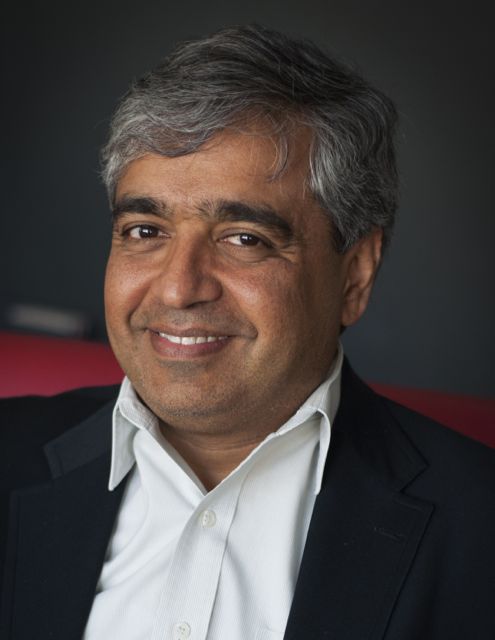
| Subir Sachdev (Harvard)
Title: Metal-to-metal quantum phase transitions not described by symmetry-breaking orders Abstract: Numerous experiments have explored the phases of the cuprates with increasing doping density p from the antiferromagnetic insulator. There is now strong evidence that the small p region is a novel phase of matter, often called the pseudogap metal, separated from conventional Fermi liquid at larger p by a quantum phase transition. Symmetry-breaking orders play a spectator role, at best, at this quantum phase transition. I will describe trial wavefunctions across this metal-metal transition employing hidden layers of ancilla qubits (proposed by Ya-Hui Zhang). Quantum fluctuations are described by a gauge theory of ghost fermions that carry neither spin nor charge. I will also |
September 23, 2020 | 10:30am ET

| Subir Sachdev (Harvard)
Title: Metal-to-metal quantum phase transitions not described by symmetry-breaking orders II Abstract: In this second talk, I will focus on (nearly) solvable models of metal-metal transition in random systems. The t-J model with random and all-to-all hopping and exchange can be mapped onto a quantum impurity model coupled self-consistently to an environment (the mapping also applies to a t-J model in a large dimension lattice, with random nearest-neighbor exchange). Such models will be argued to exhibit metal-metal quantum phase transitions in the universality class of the SYK model, accompanied by a linear-in-T resistivity from time reparameterization fluctuations. I will also present the results of exact diagonalization of random t-J clusters, obtained recently with Henry Shackleton, Alexander Wietek, and Antoine Georges. |
September 24, 2020 | 12:00pm ET

| Inna Vishik (University of California, Davis) Title: Universality vs materials-dependence in cuprates: ARPES studies of the model cuprate Hg1201Abstract: The cuprate superconductors exhibit the highest ambient-pressure superconducting transition temperatures (T c ), and after more than three decades of extraordinary research activity, continue to pose formidable scientific challenges. A major experimental obstacle has been to distinguish universal phenomena from materials- or technique-dependent ones. Angle-resolved photoemission spectroscopy (ARPES) measures momentum-dependent single-particle electronic excitations and has been invaluable in the endeavor to determine the anisotropic momentum-space properties of the cuprates. HgBa 2 CuO 4+d (Hg1201) is a single-layer cuprate with a particularly high optimal T c and a simple crystal structure; yet there exists little information from ARPES about the electronic properties of this model system. I will present recent ARPES studies of doping-, temperature-, and momentum-dependent systematics of near-nodal dispersion anomalies in Hg1201. The data reveal a hierarchy of three distinct energy scales which establish several universal phenomena, both in terms of connecting multiple experimental techniques for a single material, and in terms of connecting comparable spectral features in multiple structurally similar cuprates.Video |
October 15, 2020 | 10:30am ET

| Louis Taillefer (Université de Sherbrooke)
Title: New signatures of the pseudogap phase of cuprate superconductors Abstract: The pseudogap phase of cuprate superconductors is arguably the most enigmatic phase of quantum matter. We aim to shed new light on this phase by investigating the non- superconducting ground state of several cuprate materials at low temperature across a wide doping range, suppressing superconductivity with a magnetic field. Hall effect measurements across the pseudogap critical doping p* reveal a sharp drop in carrier density n from n = 1 + p above p* to n = p below p, signaling a major transformation of the Fermi surface. Angle-dependent magneto-resistance (ADMR) directly reveals a change in Fermi surface topology across p. From specific heat measurements, we observe the classic thermodynamic signatures of quantum criticality: the electronic specific heat C el shows a sharp peak at p, where it varies in temperature as C el ~ – T logT. At p and just above, the electrical resistivity is linear in T at low T, with an inelastic scattering rate that obeys the Planckian limit. Finally, the pseudogap phase is found to have a large negative thermal Hall conductivity, which extends to zero doping. We show that the pseudogap phase makes phonons become chiral. Understanding the mechanisms responsible for these various new signatures will help elucidate the nature of the pseudogap phase. |
October 28, 2020 | 10:30am ET

| Patrick Lee (MIT)
Title: The not-so-normal normal state of underdoped Cuprate Abstract: The underdoped Cuprate exhibits a rich variety of unusual properties that have been exposed after years of experimental investigations. They include a pseudo-gap near the anti-nodal points and “Fermi arcs” of gapless excitations, together with a variety of order such as charge order, nematicity and possibly loop currents and time reversal and inversion breaking. I shall argue that by making a single assumption of strong pair fluctuations at finite momentum (Pair density wave), a unified description of this phenomenology is possible. As an example, I will focus on a description of the ground state that emerges when superconductivity is suppressed by a magnetic field which supports small electron pockets. [Dai, Senthil, Lee, Phys Rev B101, 064502 (2020)] There is some support for the pair density wave hypothesis from STM data that found charge order at double the usual wave-vector in the vicinity of vortices, as well as evidence for a fragile form of superconductivity persisting to fields much above Hc2. I shall suggest a more direct experimental probe of the proposed fluctuating pair density wave. |
November 6, 2020 |12:30pm ET
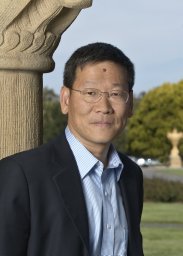
| Zhi-Xun Shen (Stanford University)
Title: Essential Ingredients for Superconductivity in Cupper Oxide Superconductors Abstract: High‐temperature superconductivity in cupper oxides, with critical temperature well above what wasanticipated by the BCS theory, remains a major unsolved physics problem. The problem is fascinating because it is simultaneously simple ‐ being a single band and 1⁄2 spin system, yet extremely rich ‐ boasting d‐wave superconductivity, pseudogap, spin and charge orders, and strange metal phenomenology. For this reason, cuprates emerge as the most important model system for correlated electrons – stimulating conversations on the physics of Hubbard model, quantum critical point, Planckian metal and beyond. [1] A. Damascelli, Z. Hussain, and Z.‐X. Shen, Review of Modern Physics, 75, 473 (2003) |
November 12, 2020 |10:30am ET
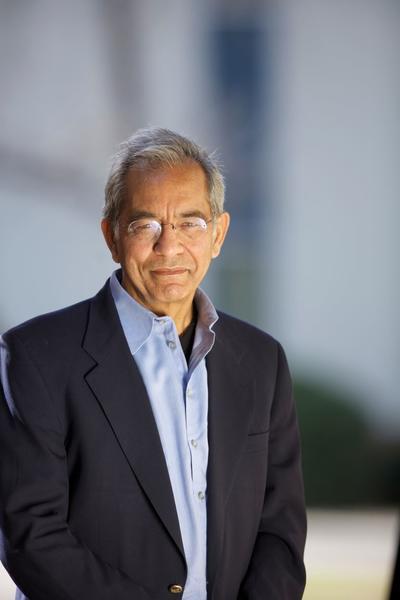
| Chandra Varma (Visting Professor, University of California, Berkeley. Emeritus Distinguished Professor, University of California, Riverside.)Title: Loop-Current Order and Quantum-Criticality in CupratesThis talk is organized as follows: 1. Physical Principles leading to Loop-current order and quantum criticality as the central feature in the physics of Cuprates. 2. Summary of the essentially exact solution of the dissipative xy model for Loop-current fluctuations. 3. Quantitative comparison of theory for the quantum-criticality with a variety of experiments. 4. Topological decoration of loop-current order to understand ”Fermi-arcs” and small Fermi-surface magneto-oscillations.Time permitting, (i) Quantitative theory and experiment for fluctuations leading to d-wave superconductivity. (ii) Extensions to understand AFM quantum-criticality in heavy-fermions and Fe-based superconductors. (iii) Problems.Video |
November 18, 2020 |10:30am ET

| Antoine Georges (Collège de France, Paris and Flatiron Institute, New York)
Abstract: Simplified as it is, the Hubbard model embodies much of the complexity of the `strong correlation problem’ and has established itself as a paradigmatic model in the field. In this talk, I will argue that several key aspects of its physics in two dimensions can now be established beyond doubt, thanks to the development of controlled and accurate computational methods. These methods implement different and complementary points of view on the quantum many-body problem. Along with pushing forward each method, the community has recently embarked into a major effort to combine and critically compare these approaches, and in several instances a consistent picture of the physics has emerged as a result. I will review in this perspective our current understanding of the emergence of a pseudogap in both the weak and strong coupling regimes. I will present recent progress in understanding how the pseudogap phase may evolve into a stripe-dominated regime at low temperature, and briefly address the delicate question of the competition between stripes and superconductivity. I will also emphasize outstanding questions which are still open, such as the possibility of a Fermi surface reconstruction without symmetry breaking. Whenever possible, connections to the physics of cuprate superconductors will be made. If time permits, I may also address the question of Planckian transport and bad metallic transport at high temperature. |
November 19, 2020 |10:30am ET

| Eduardo Fradkin (University of Illinois at Urbana-Champaign)
Title: Pair Density Waves and Intertwined Orders in High Tc Superconductors |
November 25, 2020 |10:30am ET
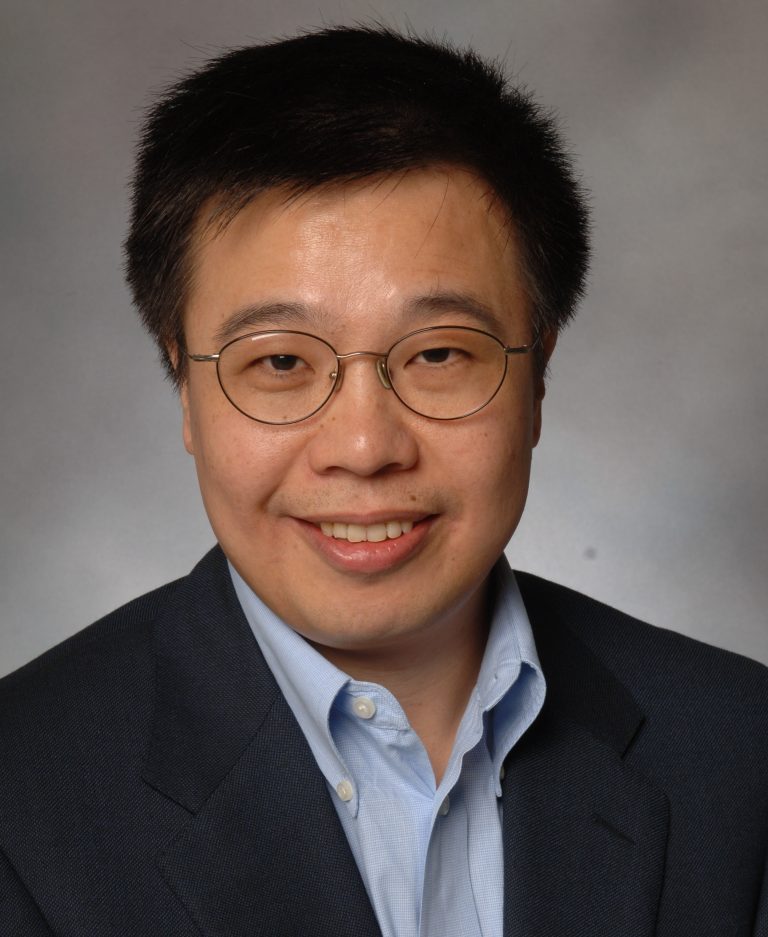
| Qimiao Si (Rice University)
Title: Bad Metals and Electronic Orders – Nematicity from Iron Pnictides to Graphene Moiré Systems Abstract: Strongly correlated electron systems often show bad-metal behavior, as operationally specified in terms of a resistivity at room temperature that reaches or exceeds the Mott-Ioffe-Regel limit. They display a rich landscape of electronic orders, which provide clues to the underlying microscopic physics. Iron-based superconductors present a striking case study, and have been the subject of extensive efforts during the past decade or so. They are well established to be bad metals, and their phase diagrams prominently feature various types of electronic orders that are essentially always accompanied by nematicity. In this talk, I will summarize these characteristic features and discuss our own efforts towards understanding the normal state through the lens of the electronic orders and their fluctuations. Implications for superconductivity will be briefly discussed. In the second part of the talk, I will consider the nematic correlations that have been observed in the graphene-based moiré narrow-band systems. I will present a theoretical study which demonstrates nematicity in a “fragile insulator”, predicts its persistence in the bad metal regime and provides an overall perspective on the phase diagram of these correlated systems. |
December 2, 2020 |10:30am ET
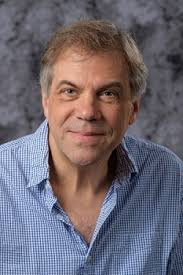
| Andrey Chubukov (University of Minnesota)
Title: Interplay between superconductivity and non-Fermi liquid at a quantum critical point in a metal |
December 9, 2020 |10:30am ET

| David Hsieh (Caltech)
Title: Signatures of anomalous symmetry breaking in the cuprates Abstract: The temperature versus doping phase diagram of the cuprate high-Tc superconductors features an enigmatic pseudogap region whose microscopic origin remains a subject of intensive study. Experimentally resolving its symmetry properties is imperative for narrowing down the list of possible explanations. In this talk I will give an overview of how optical second harmonic generation (SHG) can be used as a sensitive probe of symmetry breaking, and recap the ways it has been used to solve outstanding problems in condensed matter physics. I will then describe how we have been applying SHG polarimetry and spectroscopy to interrogate the cuprate pseudogap. In particular, I will discuss our data on YBa2Cu3Oy [1], which show an order parameter-like increase in SHG intensity below the pseudogap temperature T* across a broad range of doping levels. I will then focus on our more recent results on a model parent cuprate Sr2CuO2Cl2 [2], where evidence of anomalous broken symmetries surprisingly also exists. Possible connections between these observations will be speculated upon. [2] A. de la Torre, K. L. Seyler, L. Zhao, S. Di Matteo, M. S. Scheurer, Y. Li, B. Yu, M. Greven, S. Sachdev, M. R. Norman and D. Hsieh. “Anomalous mirror symmetry breaking in a model insulating cuprate Sr2CuO2Cl2,” Preprint at https://arxiv.org/abs/2008.06516 |
December 16, 2020 |10:30am ET

| Zheng-Yu Weng (Tsinghua University)
Title: Organizing Principle of Mottness and Complex Phenomenon in High Temperature Superconductors |
December 17, 2020 |10:30am ET
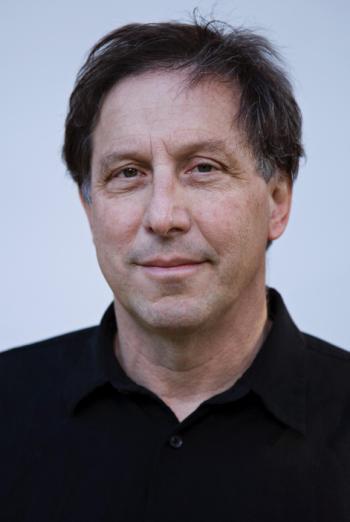
| Steven Kivelson (Stanford University)
Abstract: Despite the fact that papers submitted to glossy journals universally start by bemoaning the absence of theoretical understanding, I will argue that the answer to the title question is “quite a lot.” To focus the discussion, I will take the late P.W. Anderson’s “Last Words on the Cuprates” (arXiv:1612.03919) as a point of departure, although from a perspective that differs from his in many key points. |
January 20, 2021 |10:30am ET

| Thomas Peter Devereaux (Stanford University)
Title: Numerical investigations of models of the cuprates I will summarize efforts to solve microscopic models of the cuprates using quantum Monte Carlo and density matrix renormalization group computational methods, with emphasis on how far one can get before failing to describe the real materials. I will start with an overview of the quantum chemistry of the cuprates that guides our choices of models, and then I will discuss “phases” of these models, both realized and not. I will lastly discuss the transport properties of the models in the “not-so-normal” regions of the phase diagram. |
February 3, 2021 |10:30am ET
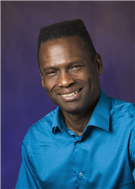
| Philip Phillips (University of Illinois Urbana-Champaign)
Title: Beyond BCS: An Exact Model for Superconductivity and Mottness |
February 10, 2021 |10:30am ET
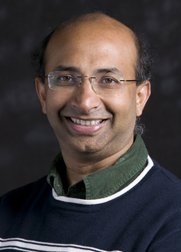
| Senthil Todadri (MIT)
Abstract: The strange metal regime is one of the most prominent features of the cuprate phase diagram but yet has remained amongst the most mysterious. Seemingly similar metallic behavior is seen in a few other metals. In this talk, I will discuss, in great generality, some properties of `strange metals’ in an ideal clean system. I will discuss general constraints[1] on the emergent low energy symmetries of any such strange metal. These constraints may be viewed as a generalization of the Luttinger theorem of ordinary Fermi liquids. Many, if not all, non-Fermi liquids will have the same realization of emergent symmetry as a Fermi liquid (even though they could have very different dynamics). Such phases – dubbed ersatz Fermi liquids – share some (but not all) universal properties with Fermi liquids. I will discuss the implications for understanding the strange metal physics observed in experiments . Combined with a few experimental observations, I will show that these general model-independent considerations lead to concrete predictions[2] about a class of strange metals. The most striking of these is a divergent susceptibility of an observable that has the same symmetries as the loop current order parameter. |
April 1, 2021 |9:00am ET

| Naoto Nagaosa (University of Tokyo)
Title: Applied physics of high-Tc theories Abstract: Since the discovery of high temperature superconductors in cuprates in 1986, many theoretical ideas have been proposed which have enriched condensed matter theory. Especially, the resonating valence bond (RVB) state for (doped) spin liquids is one of the most fruitful idea. In this talk, I would like to describe the development of RVB idea to broader class of materials, especially more conventional magnets. It is related to the noncollinear spin structures with spin chirality and associated quantal Berry phase applied to many phenomena and spintronics applications. It includes the (quantum) anomalous Hall effect, spin Hall effect, topological insulator, multiferroics, various topological spin textures, e.g., skyrmions, and nonlinear optics. I will show that even though the phenomena are extensive, the basic idea is rather simple and common in all of these topics. |
April 22, 2021 |10:30am ET

| Dung-Hai Lee (UC Berkeley)
Title: “Non-abelian bosonization in two and three spatial dimensions and some applications” Abstract: In this talk, we generalize Witten’s non-abelian bosonization in $(1+1)$-D to two and three spatial dimensions. Our theory applies to fermions with relativistic dispersion. The bosonized theories are non-linear sigma models with level-1 Wess-Zumino-Witten terms. As applications, we apply the bosonization results to the $SU(2)$ gauge theory of the $\pi$ flux mean-field theory of half-filled Hubbard model, critical spin liquids of “bipartite-Mott insulators” in 1,2,3 spatial dimensions, and twisted bilayer graphene. |
May 12, 2021 |10:30am ET

| André-Marie Tremblay (Université de Sherbrooke)
Title: A unified theoretical perspective on the cuprate phase diagram Abstract: Many features of the cuprate phase diagram are a challenge for the usual tools of solid state physics. I will show how a perspective that takes into account both the localized and delocalized aspects of conduction electrons can explain, at least qualitatively, many of these features. More specifically, I will show that the work of several groups using cluster extensions of dynamical mean-field theory sheds light on the pseudogap, on the quantum-critical point and on d-wave superconductivity. I will argue that the charge transfer gap and oxygen hole content are the best indicators of strong superconductivity and that many observations are a signature of the influence of Mott physics away from half-filling. I will also briefly comment on what information theoretic measures tell us about this problem. |
August 11, 2021 |10:30am ET

| Piers Coleman (Rutgers)
Title: Order Fractionalization* Abstract: I will discuss the interplay of spin fractionalization with broken |
September 15, 2021 |10:30am ET

| Liang Fu (MIT)
Title: Three-particle mechanism for pairing and superconductivity Abstract: I will present a new mechanism and an exact theory of electron pairing due to repulsive interaction in doped insulators. When the kinetic energy is small, the dynamics of adjacent electrons on the lattice is strongly correlated. By developing a controlled kinetic energy expansion, I will show that two doped charges can attract and form a bound state, despite and because of the underlying repulsion. This attraction by repulsion is enabled by the virtual excitation of a third electron in the filled band. This three-particle pairing mechanism leads to a variety of novel phenomena at finite doping, including spin-triplet superconductivity, pair density wave, BCS-BEC crossover and Feshbach resonance involving “trimers”. Possible realizations in moire materials, ZrNCl and WTe2 will be discussed. [1] V. Crepel and L. Fu, Science Advances 7, eabh2233 (2021) |
September 29, 2021 |11:30am ET (special time)

| Nai Phuan Ong (Princeton University) Title:.Abstract: The layered honeycomb magnet alpha-RuCl3 orders below 7 K in a zigzag phase in zero field. An in-plane magnetic field H||a suppresses the zigzag order at 7 Tesla, leaving a spin-disordered phase widely believed to be a quantum spin liquid (QSL) that extends to ~12 T. We have observed oscillations in the longitudinal thermal conductivity Kxx vs. H from 0.4 to 4 K. The oscillations are periodic in 1/H (with a break-in-slope at 7 T). The amplitude function is maximal in the QSL phase (7 –11.5 T). I will describe a benchmark for crystalline disorder, the reproducibility and intrinsic nature of the oscillations, and discuss implications for the QSL state. I will also show detailed data on the thermal Hall conductivity Kxy measured from 0.4 K to 10 K and comment on recent half-quantization results.*Czajka et al., Nature Physics 17, 915 (2021).Collaborators: Czajka, Gao, Hirschberger, Lampen Kelley, Banerjee, Yan, Mandrus and Nagler. |
Date TBA |10:30am ET

| Suchitra Sebastian (University of Cambridge)
Title: TBA |
Date TBA |10:30am ET

| Jenny Hoffman (Harvard University)
Title: TBA |
Details
- Start:
- September 2, 2020 @ 10:30 am
- End:
- February 2, 2022 @ 12:00 pm
- Event Categories:
- Event, Strongly Correlated Quantum Materials and High-Temperature Superconductors